(5772 products available)
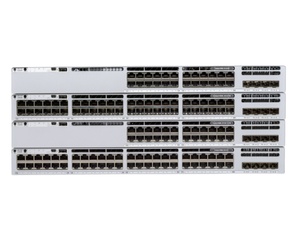
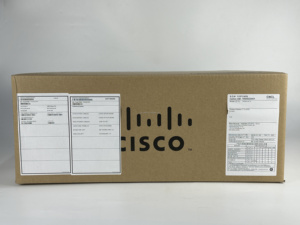

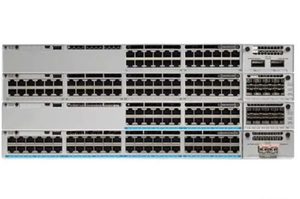
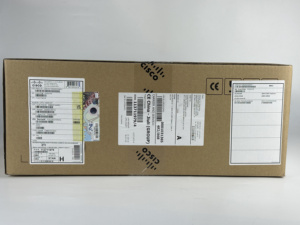











































































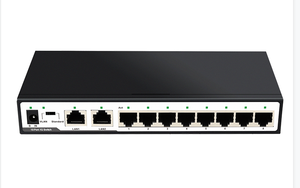





































































































































































An internet switch, also known as a network switch or LAN switch, is critical in connecting devices within a local area network (LAN). It allows multiple devices, such as computers, servers, printers, and IP phones, to communicate with each other and share resources efficiently. Here's a rundown of the different types of switches available:
Managed Switches:
Managed switches offer a robust set of features, including the ability to control, configure, and monitor the network. Administrators can customize VLANs, adjust port settings, implement QoS policies, and ensure network security through access controls. These switches provide comprehensive visibility into network performance and facilitate troubleshooting. Managed switches enable organizations to optimize network traffic, enhance security, and ensure reliable connectivity for critical applications.
These switches offer advanced features and greater control over network traffic, including the ability to prioritize certain types of data, virtual private networks(VPNs) and segmentation, the ability to remotely access and configure the switch, improved network security, monitoring and troubleshooting, and configuration of different internet protocols. Different options are available depending on the number of ports, whether it is a fiber optic switch, Power over Ethernet (POE) capabilities, and form factor.
Geographic Switches:
Geographic switches facilitate communication between devices in geographically dispersed locations. Depending on the distance, they can be used to connect different types of switches. IP-based geographic switches are preferred for long-distance connections, such as Wide Area Networks (WAN) and Internet switches, which offer better performance and reliability. Geographic switches enable global collaboration and seamless connectivity between remote offices, members of global organizations, and customers.
Hybrid Switches:
Hybrid switches are a combination of managed and unmanaged network switches, offering the best of both worlds. Unmanaged switches provide basic plug-and-play connectivity, with no configuring, while managed switches offer greater control and features such as network monitoring, quality of service (QoS), configuration options, security controls, and remote management. Hybrid switches provide essential connectivity while implementing simple network management, providing flexibility and functionality to network administrators.
Unmanaged Switches:
An unmanaged switch offers a simple, plug-and-play solution for connecting devices in a local area network without requiring technical expertise or manual configuration. Providing basic network connectivity and prioritizing cost-effectiveness and simplicity, these switches are ideal for small businesses or home offices. However, their limited functionality and inability to adjust settings make them unsuitable for organizations needing more advanced control over their networks.
An internet switch is an intelligent device designed to enhance and secure internet connections to various devices within a localized area. Here are some highlighted features:
Scalability
This refers to a system's ability to grow and manage increased demand without compromising performance. Internet switches allow businesses to grow by easily adding more devices to their existing network. By accommodating more users and devices, these switches help businesses expand their operations efficiently.
Device prioritization
In any business network, certain applications or devices are critical to operations. Noteworthy, internet switches can prioritize bandwidth for these important applications, ensuring they always have the resources they need to function properly. By implementing device prioritization, businesses can focus more on their critical operations and maintain consistent performance for essential applications.
Link aggregation
This means combining multiple connections together to act as just one connection. Doing this increases the total bandwidth and provides a backup in case one of the connections fails. Link aggregation allows internet switches to enhance the performance and reliability of networks, providing higher capacities for data transfer and more redundancy for network uptime.
Remote management capabilities
Such capabilities allow network administrators to manage and configure network switches from a remote location, providing many benefits. Remote management allows technicians to monitor network performance, make adjustments, and troubleshoot issues without being physically present. This helps maintain a healthy network and minimize downtime and service disruptions.
VLAN support
A Virtual Local Area Network is a group of computers on the same network that are actually in different locations. VLAN support allows network administrators to segment their networks, improving security and reducing broadcast traffic. By creating virtual networks, businesses can operate more efficiently and provide better services to their users.
Energy efficiency
Using less power and more energy-efficient devices helps internet switches reduce operating costs and environmental impact. Energy-efficient switches consume less electricity, saving money on utility bills and contributing to sustainability efforts. They often include features such as power over Ethernet (PoE) capabilities, which allow the switch to deliver power and data over the same network cable to PoE-enabled devices. This can eliminate the need for separate power cables for IP cameras, phones, and other devices, reducing energy consumption and benefiting the environment.
Specific usage scenarios of internet switches depend on the kind of switch in question. Here are some examples of where the different kinds of switches are used.
Below are general usage scenarios of internet switches:
Bulk buyers may consider several factors before purchasing a specific type of internet switch. Here is a summary of those factors.
Q: What is the difference between a switch and an internet router?
A: An internet router connects multiple networks and directs data between them. For example, a home router connects the local network to the internet. A switch connects devices within a single network and expands that network. It doesn't provide internet access on its own. Both work together for network connections.
Q: What is the difference between a managed and unmanaged switch?
A: An unmanaged switch is easy and ready for use by anyone. A managed switch is only for advanced IT, allowing network control, settings, and security.
Q: Does a switch increase internet speed?
A: A switch helps the network run better and makes devices respond faster, but it does not make the actual internet service faster. To keep the internet fast, choose a good switch, especially if using a managed one.
Q: Can two switches be connected to the internet?
A: Yes, two or more switches can be connected together with Ethernet cables to share the same network. Each switch will expand the number of devices that can be connected to that network. When connecting switches, ensure they support the same Ethernet connection.